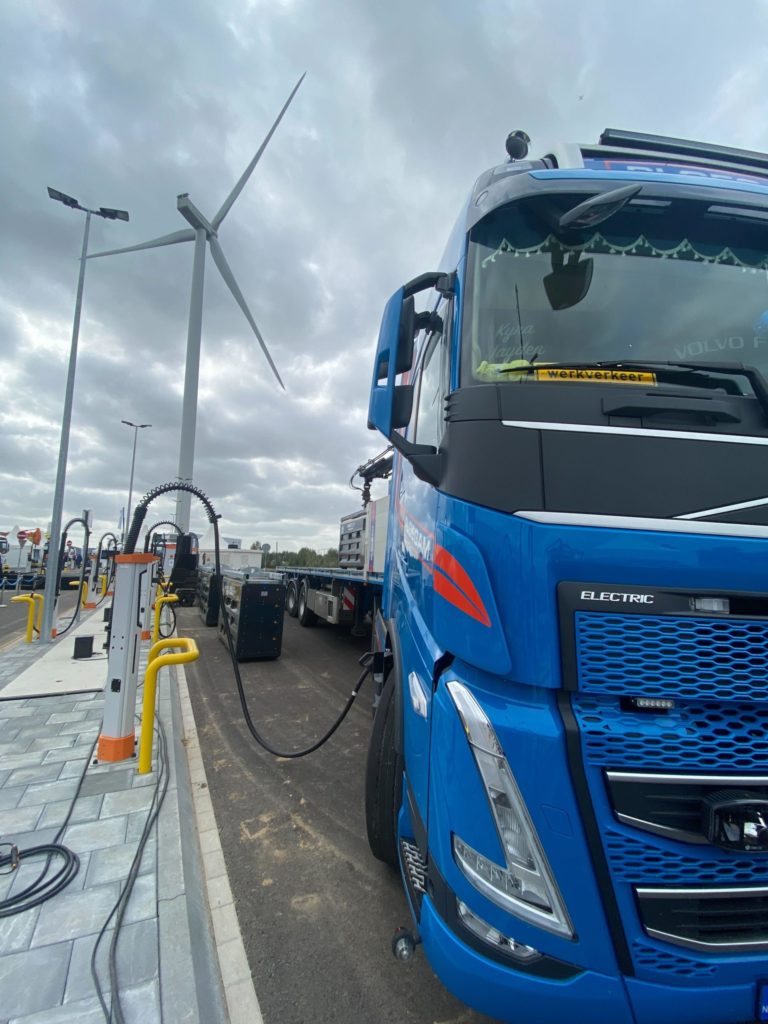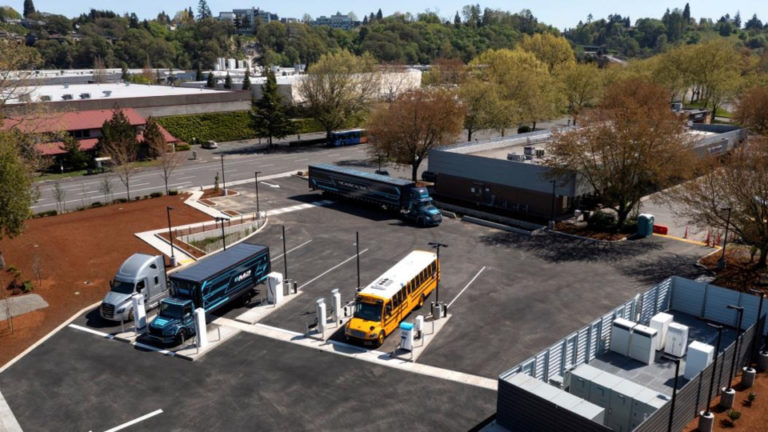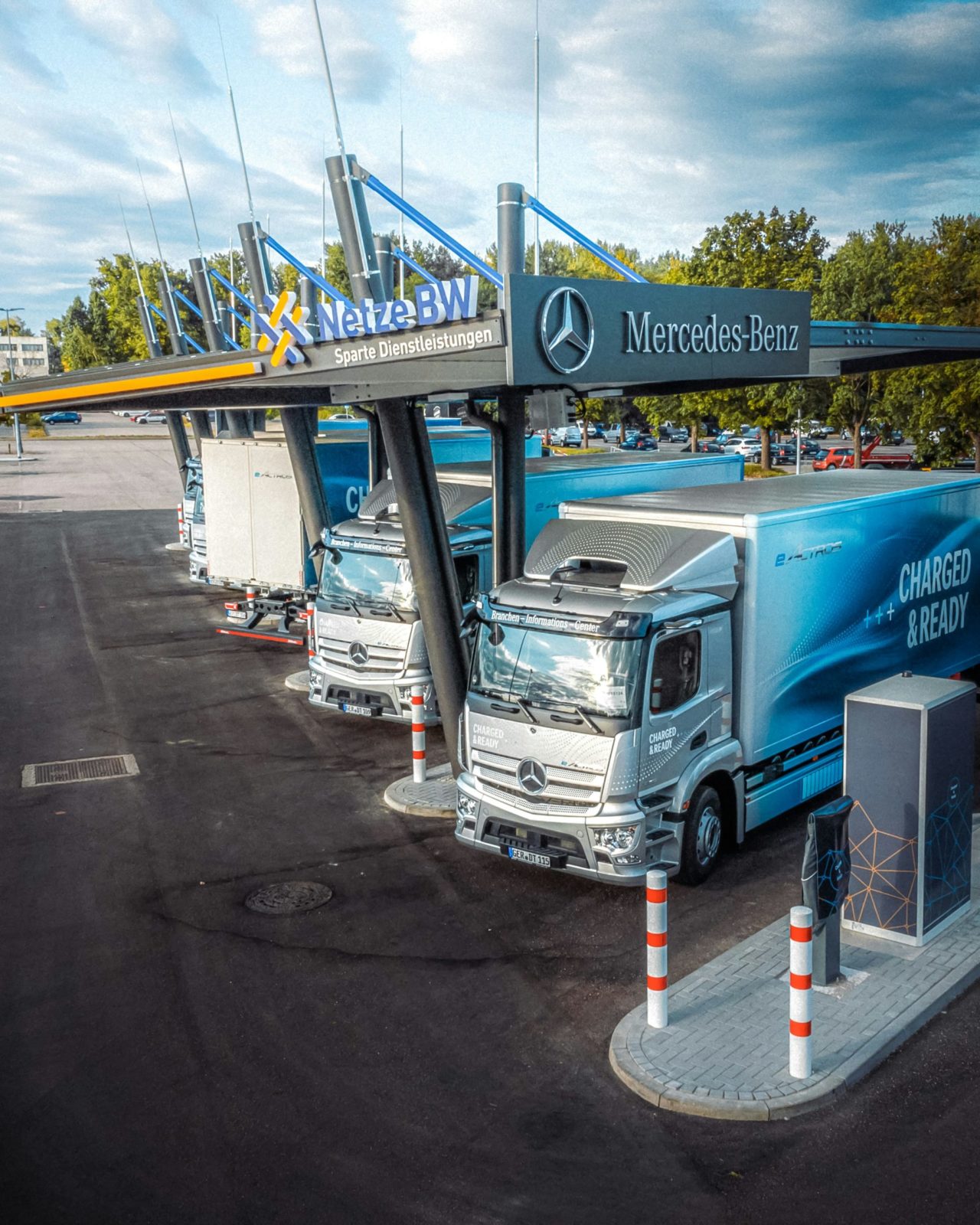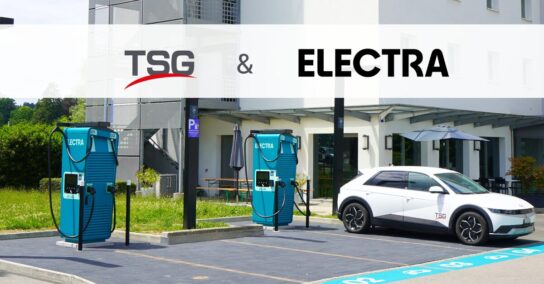The logistics industry is on the move to more sustainable energy, and heavy vehicles are taking another step towards electrification. Economic incentives and regulations in the European Union (EU), such as the Euro 7 regulation, are paving the way for more electrified heavy vehicles in the years ahead. Service stations are expecting more of these vehicles, and drivers are looking for charging points along the way.
A PwC study shows that by 2030, a third of all trucks in Europe, North America and China will be electric. However, electric trucks currently face the chicken-and-egg situation that electric cars once faced. The cost of e-trucks can be prohibitive, as can the infrastructure to charge them. Despite these drawbacks, recent EU policy contemplates the phasing-out of diesel-powered heavy vehicles in favour of zero-emission ones. With penalties being introduced for failing to meet production targets, original equipment manufacturers (OEMs) are already adapting to this changing market.
With new restrictions on heavy vehicles in major European cities, electric trucks are already the right solution in several places across Europe. In 2023 alone, 5,279 new e-trucks and 5,166 e-buses were registered in the EU.

The increasing number of electric trucks on the road will create demand for charging solutions. It will accelerate the deployment of charging infrastructure across Europe, particularly along the Trans-European Transport Network (TEN-T). Forecourts that are already adapting their facilities to accommodate EV car chargers will be well-placed to take advantage of future waves of e-trucks. The technology needed to recharge trucks is similar but more powerful, so as long as the forecourt has enough space for a truck to park, it is entirely possible to implement. The profit from charging trucks can be much higher, as the amount of energy required is much higher than for cars. Trucks are also a regular source of business: the need to recharge the truck and the driver’s need to rest generate business for service stations that provide charging points.
Which trucks will go electric?
Trucks of all kinds will be electrified over time. Distribution trucks are already being electrified to meet decarbonisation targets more quickly. Line haul and articulated trucks will come next. Specialist trucks will be the last ones to be electrified.
The momentum behind electric heavy vehicles is attracting investment in new charging technology that promises to solve the most common problems faced by EV drivers, such as range anxiety. DC charging is the most promising solution to meet the growing demand for e-trucks. For example, it will soon be possible to charge a rigid electric truck up to 80% in less than an hour using 400 kW CCS2 high-power chargers.
But electric articulated trucks require even more power. One of the latest developments that can provide this level of power is the Megawatt Charging System (MCS), which delivers over 1 MW of power. This system is designed to provide enough power to fully charge an e-truck in less than an hour. This will greatly benefit long-haul truck drivers who need to cover longer distances but also comply with rest requirements during their journeys. According to EU regulations, daily driving cannot surpass 9 hours on most days of the week and drivers must rest for 45 minutes every 4.5 hours.

While the rest period can include regular activities such as light sleep, a meal and a shower, well-equipped hubs with additional services for truck drivers can increase the average spend of drivers and drive additional passenger car traffic at the forecourt, particularly on roads where service stops are not frequent.
How service stations can tap into electric truck charging
There is also a strong case for service stations to offer truck charging.
Service stations located in industrial areas, on major TEN-T networks or near ports can add value by implementing DC solutions for electric trucks and EVs in general. These sites can usually rely on a large area to accommodate several large trucks carrying goods. In addition, they can install solar panels on the covered surfaces of the forecourts and canopies to generate energy. They can also connect to nearby wind and solar farms to access more sustainable energy sources, backed up by battery storage. This makes the business more sustainable by reducing the amount of electricity it draws from the grid and saving money in the medium term.
Motorway service stations offer more parking space and can opt for more robust infrastructure to meet higher demand. While urban service stations do not have the space to charge trucks, there is plenty of space on motorway forecourts to install high-power EV chargers. Since companies know the routes of their trucks and can predict when they will need to recharge, they can plan their journeys and even reserve charging points in advance via a booking system.

Building on these innovations, service stations have the potential to become next-generation mobility hubs. They can finance this by either attracting investment in new businesses or leasing space near the EV chargers and filling stations to other companies. This will drive the creation of a hub that could even offer other forms of energy such as hydrogen, as well as other business types, such as car washes, restaurants, hotels, and other convenient services like hairdressers or gyms. The investment in premium motorway services will not only attract new heavy vehicles drivers but also attract EV drivers looking for charging points with enhanced services along highways.
To successfully implement EV charging infrastructure for e-trucks, a few challenges need to be overcome. Namely, the grid connection, which might not be powerful enough to provide the necessary power to heavy vehicles. Additionally, the station also needs proper planning and design of all underground networks, in particular cabling, to get the most efficient and safer energy distribution. Moreover, to increase the use of the asset, forecourts must consider proper power management distributing electricity from central power conversion units to distributed charging satellites close to the e-trucks.
TSG is enabling the transformation of service stations, allowing them to provide the new energy that drives mobility. We are developing heavy transport multi-energy projects with electric trucks and buses around Europe, especially considering high power infrastructure in full compliance with the highest standards of quality and safety. We design, plan, supply equipment, install and maintain the facilities as a full turnkey solution, tailored to each customer’s needs. Let us help you future-proof your forecourt for the electric vehicles of the future.
For more information, contact us.



